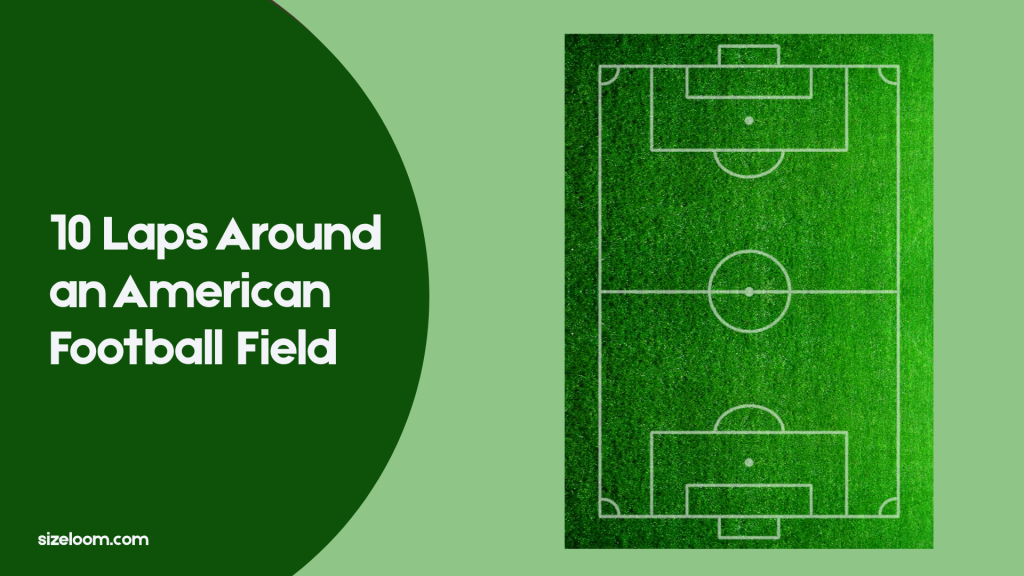Understanding 2 miles in relatable terms can help you estimate effort, timing, and yes—those fitness goals. Especially if you’re aiming for a consistent training routine or just want to stay active without overdoing it. Here’s how 2 miles stacks up in the real world.
How Far is 2 Miles? 8 Everyday Comparisons to Help You Picture It
1. 10 Laps Around an American Football Field

An American football field is 360 feet long including end zones. A full lap around the field (sidelines and end zones) is about 0.25 miles. That means it takes approximately 8 full laps to make 2 miles, not 10. Still, it offers a straightforward mental model, especially for those tracking their average mile time or improving running form on a flat surface. Football fields provide a soft, consistent terrain—ideal for novice runners working on cardiovascular fitness without the distraction of traffic or terrain changes.
2. 19 Laps Around a Hockey Rink

A standard NHL rink measures 200 feet by 85 feet. The perimeter is about 570 feet. Since there are 5,280 feet in a mile, you’d need about 18.5 laps to equal 2 miles. So rounding up to 19 gives a close estimate. This might not be your go-to fitness level benchmark, but if you’re imagining indoor spaces, it helps put distance into perspective. Great for those rainy-day workouts where you’re stuck indoors.
You might like: 12 Things You Know That Measure Around 3 Meters.
3. 8 Laps Around a Standard Running Track

A classic measurement. One lap around a standard 400-meter track equals roughly 0.25 miles. Multiply that by 8, and you have 2 miles exactly. Elite runners can cover this distance in under 9 minutes. Most beginner runners will need 18 to 22 minutes, depending on pace. Using a pace calculator can help track progress based on your current fitness level and training pace.
4. 32X a 100-Meter Dash

Here’s another metric: a 100-meter sprint equals about 0.062 miles. Multiply that by 32, and you’re just past the 2-mile mark. It sounds easy when broken into short bursts, but try stringing those together—especially at a brisk pace. Even competitive runners use shorter distances like these for interval workouts to boost cardiovascular health and lower stress levels.
5. Halfway Across the Sunshine Skyway Bridge

The Sunshine Skyway Bridge near Tampa Bay spans approximately 4.1 miles in total length. Going halfway across puts you just over 2 miles. It’s a favorite spot for runners and cyclists looking to improve cardiovascular fitness. Plus, the elevation change adds intensity without needing to adjust your steps per minute manually.
6. 5 Times Around a Typical College Campus Quad

College quads vary widely, but many average about 0.4 miles around. If yours fits that mold, five loops bring you right to 2 miles. This is especially handy for students or faculty fitting physical activity into a hectic schedule. Even a slower pace can provide real health benefits when repeated throughout the week.
7. 16 Times Around a Shopping Mall Concourse

Most mall walkers know the math: a medium-to-large shopping mall concourse is usually around 1/8 of a mile per lap. So yes—16 laps comes out to roughly 2 miles. This is a practical comparison for those walking indoors at average walking speeds, whether for heart health, lowering blood pressure, or just squeezing in physical activity on lunch break.
Related reading: How Heavy is 700 Kilograms? 8 Everyday Things That Weigh the Same.
8. 11X the Length of a Large Ocean Cruise Ship

Mega cruise ships like Royal Caribbean’s “Wonder of the Seas” measure about 1,188 feet. That means 11 full-length walks from bow to stern cover roughly 2.5 miles. Adjusting for deck accessibility and walking paths, 11 passes on a typical large ship brings you close to the 2-mile distance. For those vacationing, it’s a subtle reminder that consistent training and walking can happen anywhere—even while at sea.
Final Thoughts
Understanding common distances like 2 miles makes it easier to plan your walks, workouts, or even those “let’s just see how far I can go” days. Whether you’re an advanced runner tracking your faster pace, a casual walker checking your average mile time, or someone who’s just starting with shorter distances—these comparisons bring the abstract into focus. A moderate pace still burns calories. A slower pace still builds endurance. Every step counts toward heart health, cardiovascular disease prevention, and overall wellness. So next time you think, “How far is 2 miles?”—picture a football field, a cruise ship, or your old college quad. Two miles isn’t just a number. It’s movement, consistency, and progress—no matter your pace.
Need help choosing your size? Check out the SizeLoom Fit Guide.


